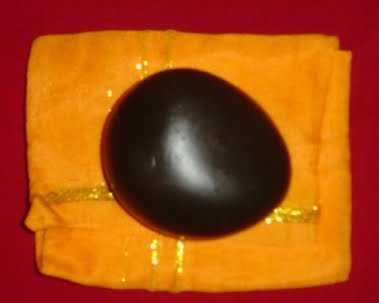Brahmanyan
Active member
 Recently, my brother-in-law who had been to Muktinath and a few religious places in Nepal, presented us a "Saligrama" stone or "Saligram shila" picked from Gandaki river there. He explained about its religious significance of this stone. I was more curious about the origin of this stone like article and browsed the internet for more scientific information about the same, which I wish to share here.
Recently, my brother-in-law who had been to Muktinath and a few religious places in Nepal, presented us a "Saligrama" stone or "Saligram shila" picked from Gandaki river there. He explained about its religious significance of this stone. I was more curious about the origin of this stone like article and browsed the internet for more scientific information about the same, which I wish to share here. First "Saligrama" is not a stone but fossilized remains of creatures from ocean called 'ammonites' which were extinct 65 millions of years ago, around the same time 'dinosaurs' became extinct. Which the geologists call 'Cretaceous era'. During this period, they believe there was a vast area of ocean existed, separating two huge land masses, both of which shifted towards each other and collided, resulting in the formation of mighty Himalayan chain of mountains. The entire marine life existed in the ocean was destroyed and got buried under the land mass and became fossilized. Geologically Himalayas are the youngest mountain ranges in the world. The fact that the Himalayas was underneath an ocean is evident from the findings of fossils and sediments. The sedimentary rocks resembling sea beds are found in the foot hills of the mountain range, which are not covered by snow.
Ammonites belong to invertebrate group of marine animals related to sub class Ammonoidea of the class Cephalopoda, which are closely related to living Coleoids (octopuses, squid and cuttlefish) than to shelled 'nautiloids'.
Brahmanyan,
Bangalore.
Last edited:
